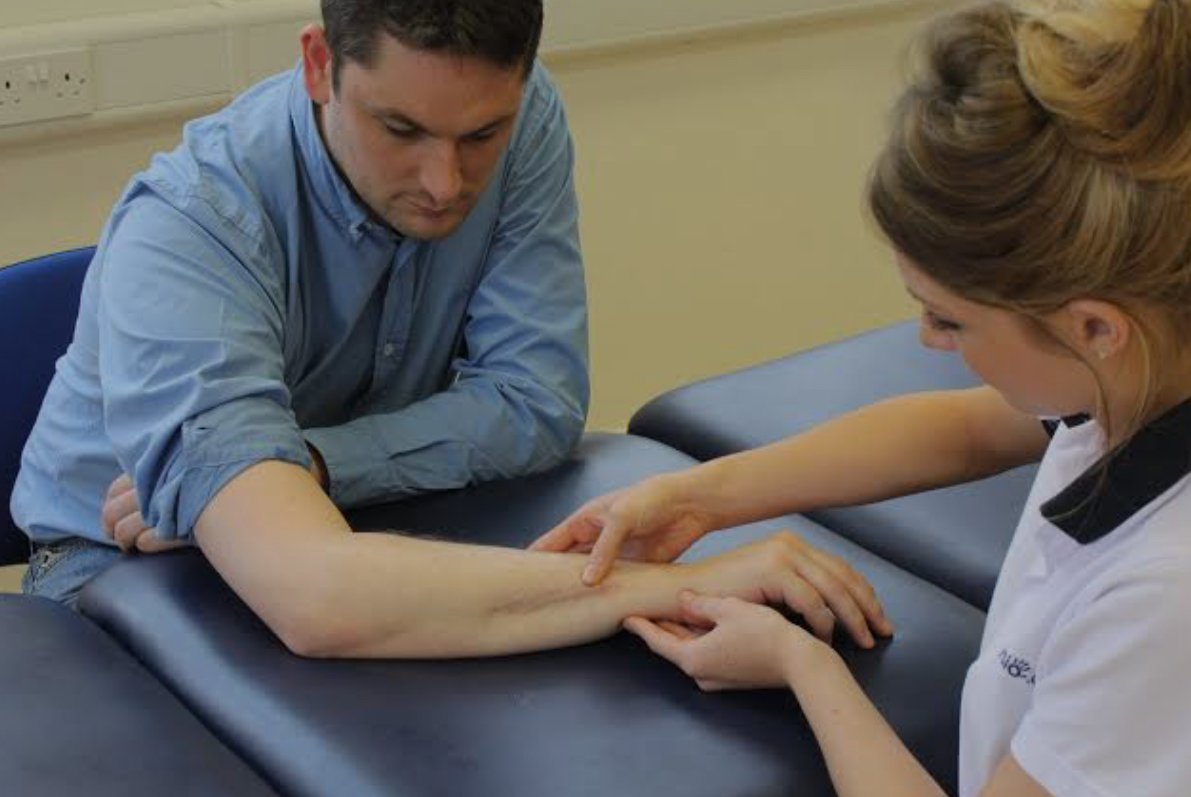Manual therapy v/s Electrotherapy
In physical therapy and rehabilitation, two distinct methods are employed: electrotherapy and manual therapy.
Manual Therapy involves hands-on techniques performed by a therapist.
It COVERS procedures including soft tissue work, joint mobilizations, and manipulations.
Directly addressing musculoskeletal problems aims to increase function, decrease discomfort, and improve movement.
Electrotherapy uses electrical modalities to promote healing and pain relief. Common types include TENS (Transcutaneous Electrical Nerve Stimulation), ultrasound, and electrical stimulation. ELECTROTGERAPY has the potential to mitigate discomfort, enhance muscular function, and promote tissue repair.

Depending on the particular ailment, the needs of the patient, and the therapeutic objectives, either strategy may be beneficial. They are frequently combined to maximize recuperation.
Manual therapy V/S Electrotherapy⬇️
Manual Therapy
1. Techniques:
Joint Mobilizations and Manipulations: These involve passive movements of the joints to improve range of motion, reduce stiffness, and alleviate pain. Mobilizations are usually graded from gentle to more forceful, while manipulations are high-velocity, low-amplitude thrusts aimed at restoring joint function.
- Soft Tissue Techniques: These include massage, stretching, and myofascial release. They target MUSCLES , tendons, and fascia in an effort to relieve tension, reduce discomfort, and improve blood flow.
2. Benefits:
- Pain Relief: By reducing muscle tension and improving joint alignment, manual therapy can decrease pain.
- Improved Mobility: Techniques can restore normal joint and tissue function, enhancing movement and flexibility.
- Enhanced Function: By addressing musculoskeletal issues, manual therapy can help in regaining normal function and performance in daily activities.
3. Applications:
- Musculoskeletal Pain: Effective for back pain, neck pain, and joint issues.
- Post-Surgery Rehabilitation: Helps in recovery by restoring movement and function.
- Sports Injuries: Useful for managing injuries and improving athletic performance.
Electrotherapy
1. Modalities:
- TENS (Transcutaneous Electrical Nerve Stimulation): Uses low-frequency electrical currents to stimulate nerves and reduce pain perception. It’s also used for chronic pain management.

- Ultrasound Therapy: Employs sound waves to penetrate deep tissues, promoting healing, reducing inflammation, and improving circulation.
- Electrical Stimulation (e.g., NMES – Neuromuscular Electrical Stimulation): Sends electrical impulses to stimulate muscle contraction, which can help in muscle strengthening and rehabilitation.
2. Benefits:
- Pain Relief: Electrotherapy can alter pain signals and stimulate endorphin release, providing pain relief.
- Muscle Strengthening: By stimulating muscle contractions, it can help in strengthening weakened muscles, especially post-injury or surgery.
- Tissue Healing: Stimulating blood flow and cellular activity can enhance the repair of damaged tissues.
3. Applications:
- Acute and Chronic Pain: Useful for managing both types of pain through different modalities.
- Muscle Rehabilitation: Assists in muscle recovery and strengthening, especially in cases of atrophy or weakness.
- Post-Surgical Recovery: Aids in reducing swelling and promoting faster healing.
Comparison and Integration Between Manual therapy V/S Electrotherapy
1. Integration:
- Many rehabilitation programs combine manual therapy and electrotherapy to address various aspects of recovery. For instance, a therapist might use manual techniques to improve joint mobility and then apply electrotherapy to manage pain and enhance muscle function.
2. Considerations:
-
Manual Therapy: Requires the skill and expertise of a therapist. Effectiveness can be influenced by the therapist’s technique and the patient’s response.
-
Electrotherapy: Can be administered through machines, often with less need for direct therapist involvement, but requires proper settings and protocols for effective treatment.

In the END, the state of the patient, the objectives of the treatment, and the patient’s response to each modality will determine whether manual therapy, electrotherapy, or a combination of the two is selected.
